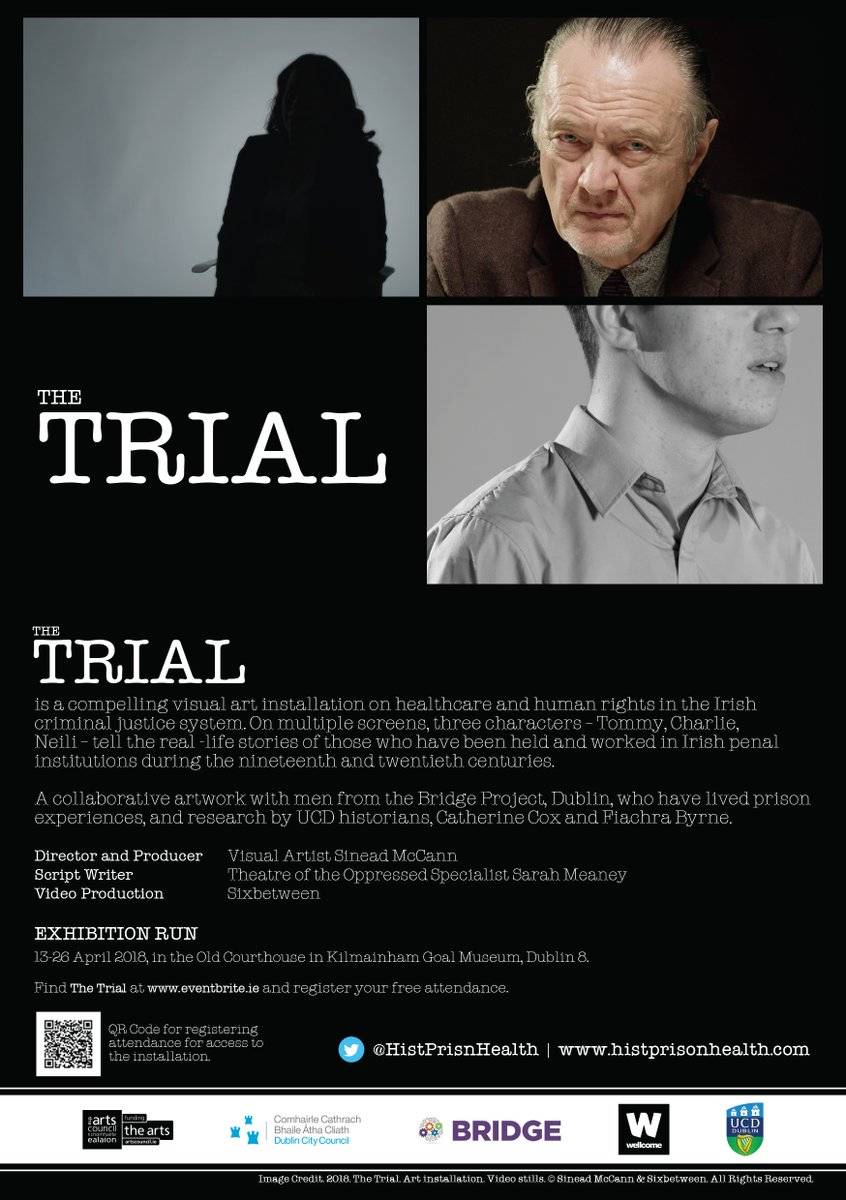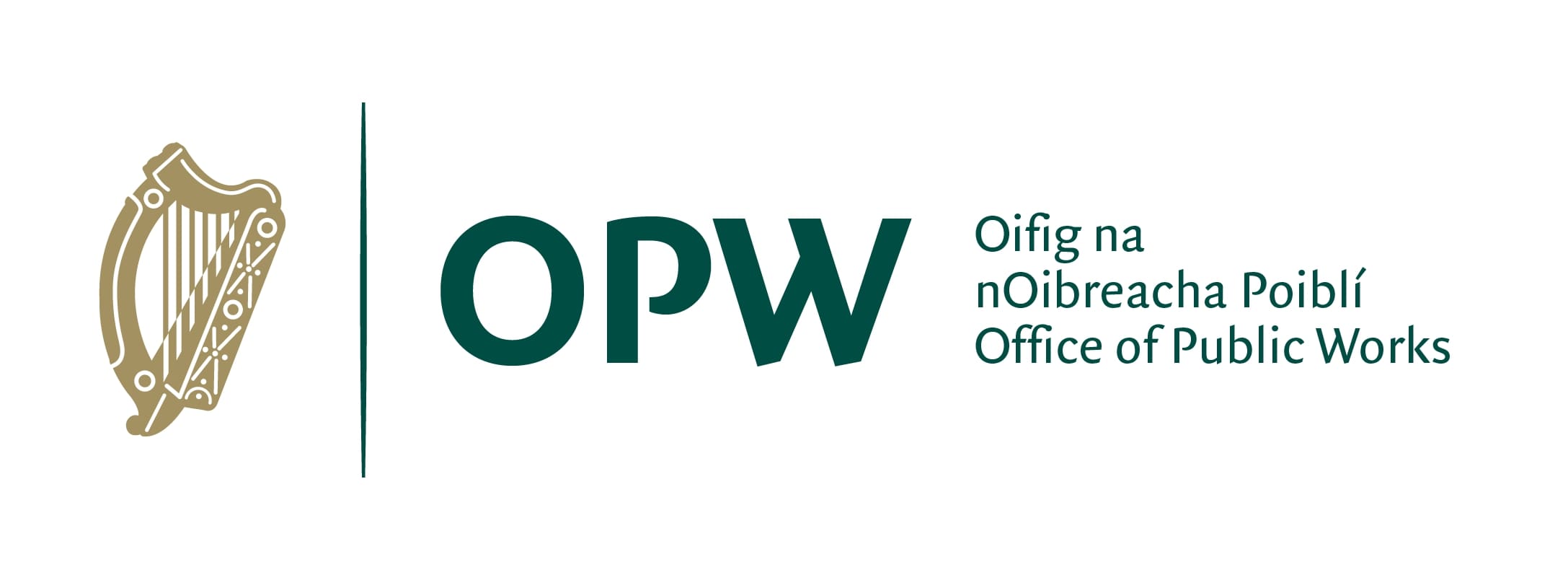Exhibitions
Kilmainham Gaol Museum Permanent Exhibition
Ongoing
The main exhibition at Kilmainham Gaol Museum tells the story of the social and political history of the prison. Three main themes are explored on three levels of the exhibition space:
- social history of Kilmainham Gaol and Irish prisons in the 1800s
- the history of Irish nationalism and republicanism, 1796-1924
- the restoration of Kilmainham Gaol in the 1960s
The ground floor exhibition tells the story of Kilmainham Gaol from the perspective of the ordinary prisoner. A prison register for Kilmainham Gaol shows the crimes for which men, women and children were imprisoned, ranging from violent assault to stealing apples from an orchard. Visitors can see the small wooden box used by convict John Sheahan to carry his possessions to Australia in 1842. A Victorian-era Gandolfi camera, used to capture prisoner ‘mugshots’, is also on display.
Rebellion, nationalism and the path to independence are the themes of the exhibition on the first floor, which deals with Irish political history from the 1798 rebellion up until the end of the Irish Civil War in 1924. Objects on display include Robert Emmet’s proclamation of a provisional government of Ireland in 1803, the last letter written by Charles Stewart Parnell and scapulars taken from the body of Michael Collins following his assassination in 1922.
The ‘Last Words’ section of this exhibition displays the last letters and personal belongings of the fourteen leaders of the Easter Rising executed at Kilmainham Gaol in May 1916.The final floor of the exhibition tells the extraordinary story of a group of volunteers who rescued Kilmainham Gaol from near ruin in the 1960s and restored it as a monument dedicated to the men and women who were imprisoned or executed in Kilmainham Gaol in the cause of Irish independence.
5 February – 3 May 2020
One of the central laws of science is that matter cannot be made or destroyed, it can only be changed from one form to another. This exhibition looks at how objects change, evolve and are transformed. All the items on display are from the Kilmainham Gaol Museum collection and many of them were made in prisons. Prisoners often show great ingenuity in making things from the limited resources available to them. Coins, bones, the very fabric of a building, can provide the raw materials needed to make something entirely new.Even small changes to an object can also give it an entirely new purpose. These changes are sometimes driven by practical necessity, but they can also be a deliberate act of subversion.
Not all changes are physical. Many of the most precious objects held in the Kilmainham Gaol Museum collection are seemingly ordinary items which have been kept and preserved because of their association with historic figures and events. The story we are told about an object can cause us to completely reimagine what they mean to us and how we value them.
This exhibition features fifteen items from the Kilmainham Gaol collection which have been transformed or changed by:
- Being made into something else,
- Being used for a purpose other than that which was originally intended, or
- Being associated with a particular historic event or because of a story that is associated with it.
There is a particular emphasis on how prisoners used the resources around them during their captivity, often showing incredible ingenuity and imagination.
This exhibition is informed by ideas of sustainability and eco-awareness with an emphasis on how we can remake and reimagine objects. The concept is itself an evolution of an earlier exhibition – Object Lessons – and throughout the project every effort was made to use existing resources from within the museum. The design reflects the museum’s desire to keep its carbon footprint to a minimum.
Free admission to the exhibition.
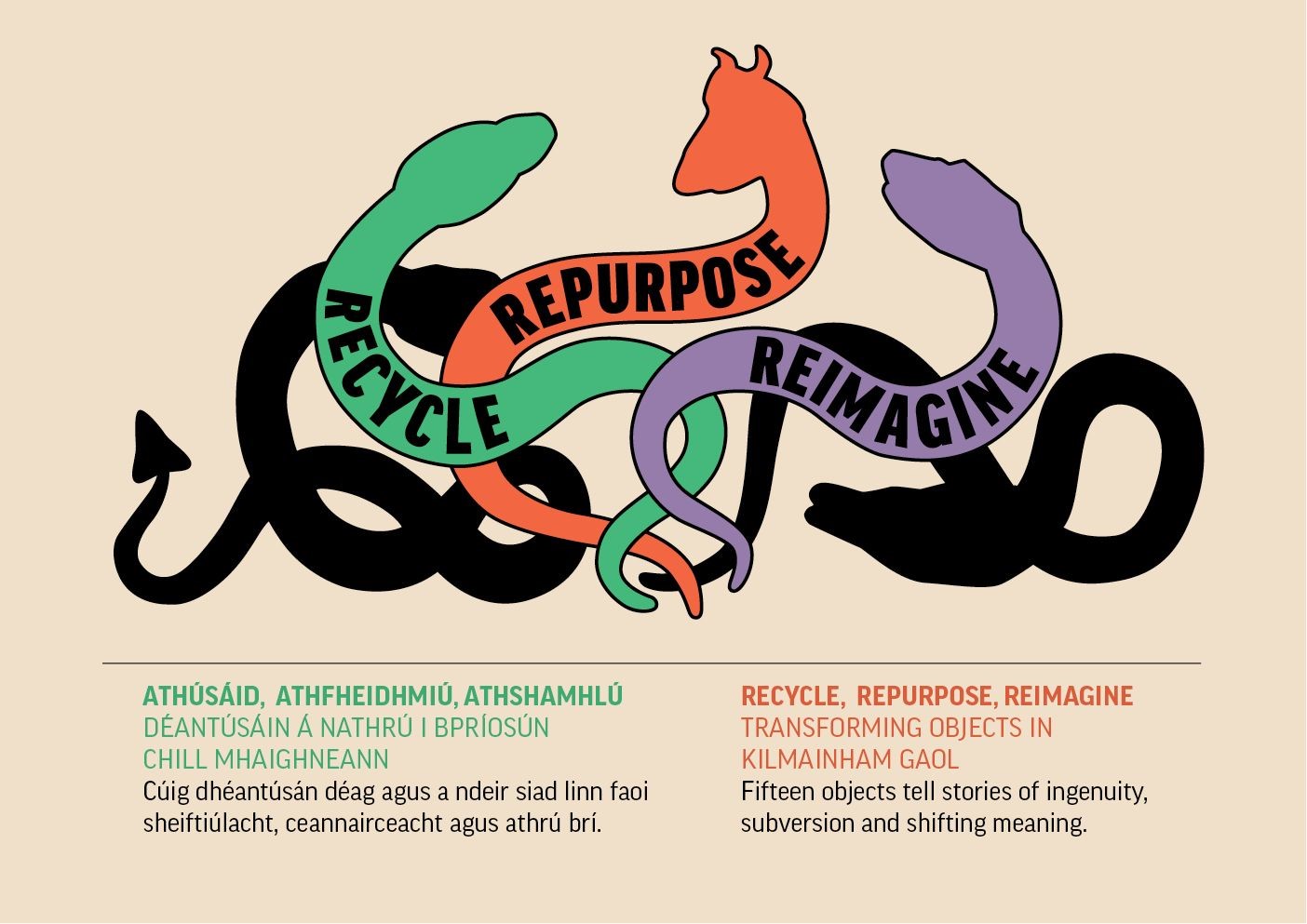
An exhibition of arts and crafts from Irish prisons.
14 June—21 July 2019
“It is fascinating – in a prison school – to see a prisoner, record a song, build a ceramic sculpture, turn a wooden bowl on a lathe, or stitch up a soft toy on a sewing machine. Prison teachers work closely with their students helping them to realise their talent and discover their potential. This exhibition will reflect the theme of the European Prison Education Association conference, taking place in Dublin in June – past, present and future of prison education – by featuring the work of Eddie Cahill who started painting while serving a sentence in the 1980s and went on to have a career as an artist when released. The work of people – presently in custody – will also feature, including work created by prison artists using information technology; suggesting trends and possibilities in self-expression, communication, art and education in prisons into the future. Unlock is a showcase of the work of Irish prisoners and prison teachers revealing a more positive side of prison life – opening at Kilmainham Gaol – on 14 June until 21 July 2019.”
Tom Shortt, Arts Officer, Irish Prison Education Service.
Free admission to the exhibition.
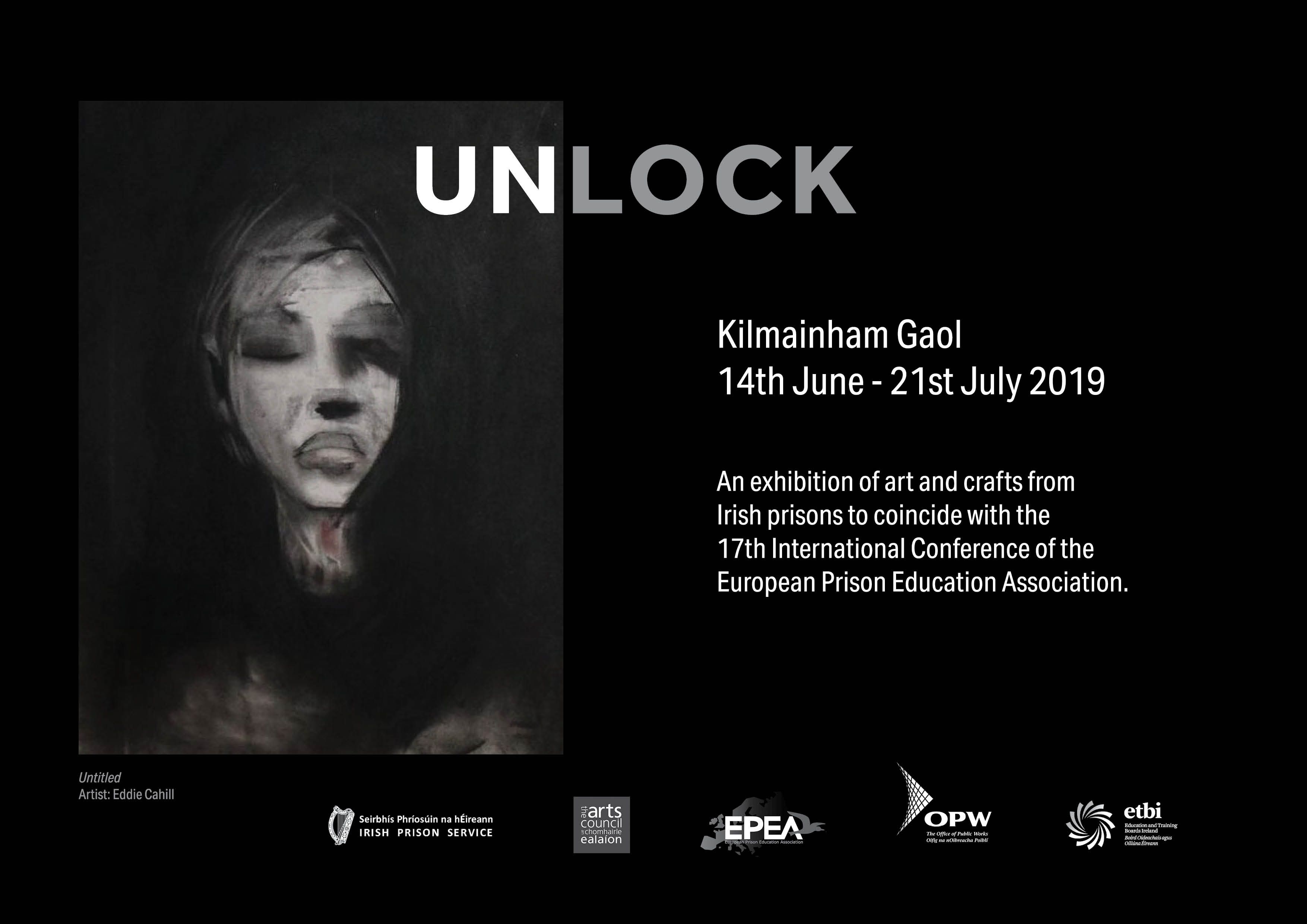
9 February—19 May 2019
Living Inside is a new exhibition at Kilmainham Gaol Museum about change and continuity, institutions and ideas, pain and protest, in Irish prisons. It tells the stories of six people whose experiences speak to the history of Irish prison reform, from prisoners’ protests against unhealthy living conditions to the psychological strain faced by prison officers.
Drawing on research by Oisín Wall (University College Dublin) on the history of prison reform organisations and activists in 1970s and 1980s Ireland, it includes the evocative images by photojournalist Derek Speirs, historical objects from the rich and remarkable collections of the Mountjoy Prison Museum and other illuminating artefacts from archives across Ireland.
Health is central to the history of prisons, both as a focus for reform and as a weapon of protest through hunger strikes and other desperate measures. Each story shows how reform, health, hope, and fear have shaped the prison system that we have today.
Living Inside is part of a Wellcome Trust funded project ‘Prisoners, Medical Care and Entitlement to Health in England and Ireland, 1850–2000’. A collaboration between University College Dublin (Catherine Cox) and the University of Warwick (Hilary Marland) it explores the history of health and healthcare in prisons.
Find out more about our research at https://histprisonhealth.com and follow us on twitter @HistPrisonHealth
Content warning: This exhibition deals with topics that some people might find distressing including self-harm, drug abuse, physical restraint, and violence.
Free admission to the exhibition.
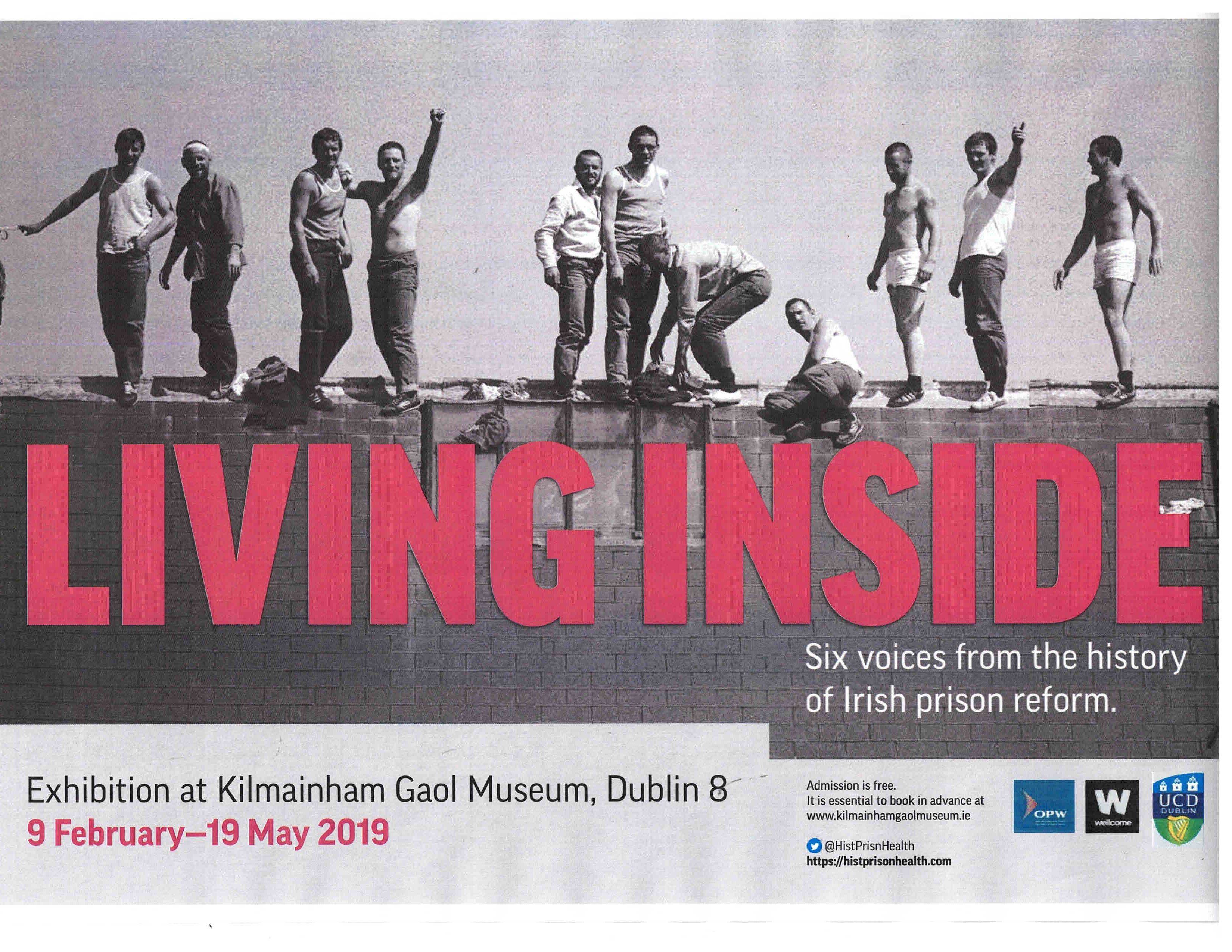
‘From Prison to Citizenship: Mary Bourke-Dowling, Suffragette and Republican
7 December 2018 to 7 April 2019
December 14th marks 100 years since the first general election in which Irish women were able to vote. To celebrate this significant event, Kilmainham Gaol Museum will present an exhibition on Mary Bourke Dowling, a forgotten hero of the Irish suffragette movement. In November 1911 she was among several hundred suffragettes arrested in London for smashing windows across the city. She threw stones at the windows of the British War Office and was tried at Bow Street Police Court where she was sentenced to five days imprisonment in Holloway Gaol. She and the other suffragettes said that such destruction was the only form of protest available to them.
Mary Bourke-Dowling later joined the republican women’s organisation Cumann na mBan and took the Anti-Treaty side in the Irish Civil War. She spent over six months imprisoned in Kilmainham Gaol and the North Dublin Union in 1923. As a member of the Prisoners’ Council, Bourke-Dowling drew on her experiences as a suffragette and advised her fellow prisoners on how best to resist the authorities.
The exhibition centres on a scrapbook Mary created to preserve mementoes and documents relating to her imprisonment in both Holloway and Kilmainham Gaols. It includes a letter from her brother addressed to ‘Miss Bourke-Dowling, Suffragette, Bow Street Police Station, London’ and instructions she received from the protest organisers in which they advised the women attending the demonstration “… not to bring more money than is absolutely necessary, nor to wear any jewellery, furs, nor to carry umbrellas“. This is the first time that this remarkable scrapbook has been on display to the public. Other items include a watercolour she painted during the Civil War showing one of her fellow female republican prisoners sitting in the Invincibles’ Yard of Kilmainham Gaol, as well as her Detention Order from 1923 signed by Richard Mulcahy, Minister for Defence.
The exhibition runs at Kilmainham Gaol Museum until Sunday, April 7th 2019 and admission is free.
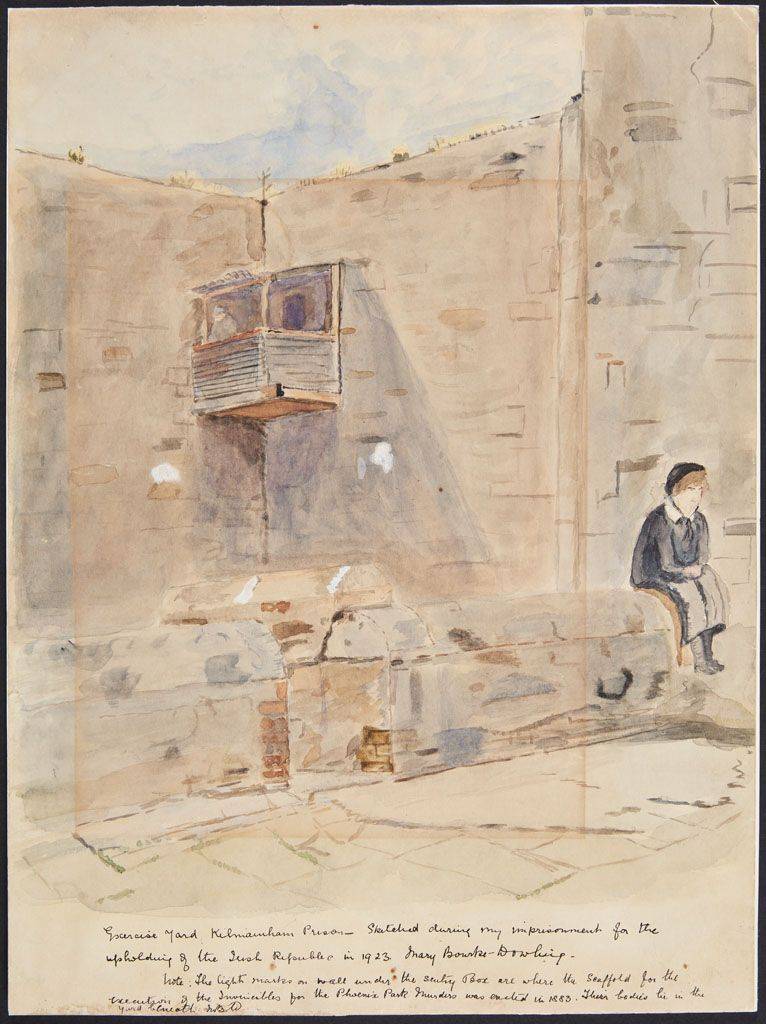
Centenary Exhibition 2018
13 July 2018 – 09 January 2019
An exhibition to mark the centenary of Nelson Mandela’s birth and the 25th anniversary of diplomatic relations between Ireland and South Africa. It traces Mandela’s extraordinary life through five themes or phases – as comrade, leader, prisoner, negotiator and statesman. Each theme is explored through images and text, supported by films, photographs and audio recordings.
Curated by the Apartheid Museum in Johannesburg, the exhibition also reflects on Ireland’s support for the anti-apartheid movement and the enduring relationship between the two countries.
“Your country has had the most energetic and effective anti-apartheid movements in the world. Irishmen and women have given wholehearted and often sacrificial support for our struggle…. We salute your sportspeople, especially your rugby players, your writers and artists and the Dunnes’ and other workers” (Nelson Mandela)
The exhibition is a cooperation project between the Irish Embassy in Pretoria, the Department of Foreign Affairs and Trade, the Apartheid Museum, Kilmainham Gaol Museum and the Nelson Mandela Foundation.
Free admission to the exhibition.
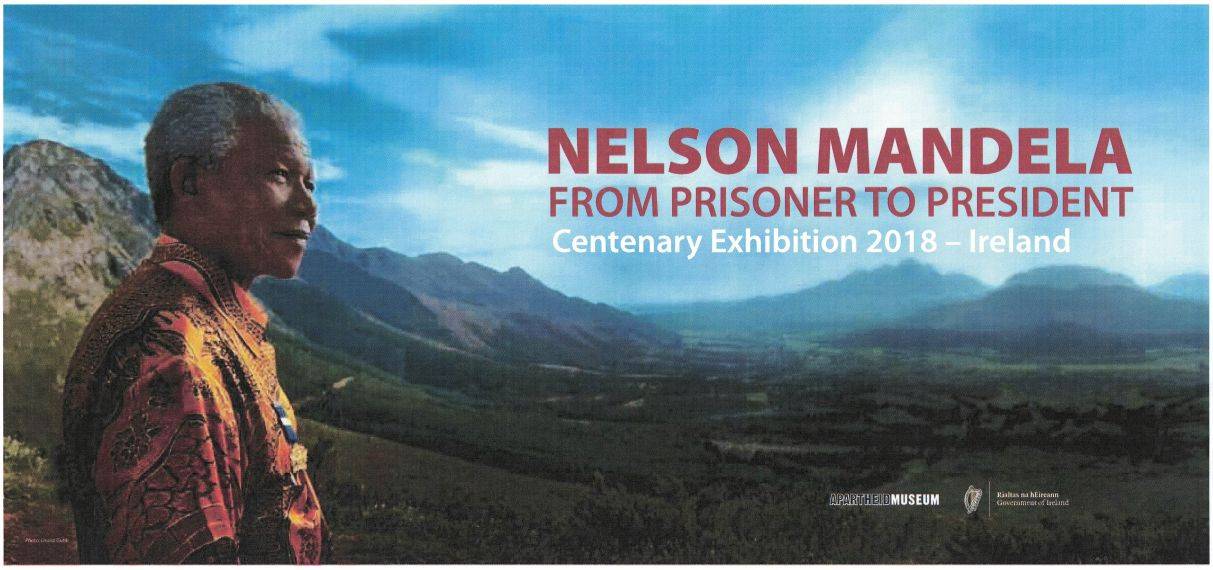
17 April 2018 to 30 September 2018
April 17th 2018: To coincide with Dublin City Council’s One City, One Book initiative, Kilmainham Gaol Museum is proud to unveil a new exhibition focused on the work of pioneering writer Dorothy Macardle.
Macardle was an unlikely rebel. She came from a wealthy Dundalk-based brewing family and taught in Alexandra College but through her friendship with Maud Gonne, she became involved in the Irish revolutionary movement. She supported the Anti-Treaty side during the Civil War which led to her arrest and imprisonment in November 1922. Her time in prison gave her the opportunity to explore her interest in creative writing and led to the publication of a collection of gothic short stories in 1924 called Earth-bound: Nine Stories of Ireland.
She dedicated each of the nine stories to a fellow female republican prisoner and the exhibition includes rarely-seen objects related to each of these nine women, including the suffragist and socialist Rosamond Jacob and Nora Connolly O’Brien, the daughter of the 1916 leader James Connolly.
Rarely seen objects on show include an autograph book containing the signatures of the Irish delegates at the Treaty negotiations, an original typescript of ‘The Kilmainham Tortures’, Macardle’s shocking account of the forced removal of women prisoners from Kilmainham Gaol in April 1923, Maud Gonne’s original Inghinidhe na hÉireann sash, and a pair of spectacles owned by Éamon de Valera.
Other fascinating items are a programme from a concert held by the women prisooners in 1923 to commemorate the -heroes of the 1916 Rising, a knife and spoon smuggled out of Mountjoy Prison by Eithne Coyle on her escape in 1921, plus a rare first edition of Macardle’s Earth-bound collection.
Macardle became a full time writer on her release, and retained her interest in the paranormal with her gothic novel, The Uninvited. Recently republished by Tramp Press, the book was turned into an Oscar nominated film in 1944 starring Ray Milland. She continued to write up until her death in 1958.
Unsurrendered Spirits: The Prison Writings of Dorothy Macardle runs at Kilmainham Gaol Museum until Sunday, September 30th and admission is free.
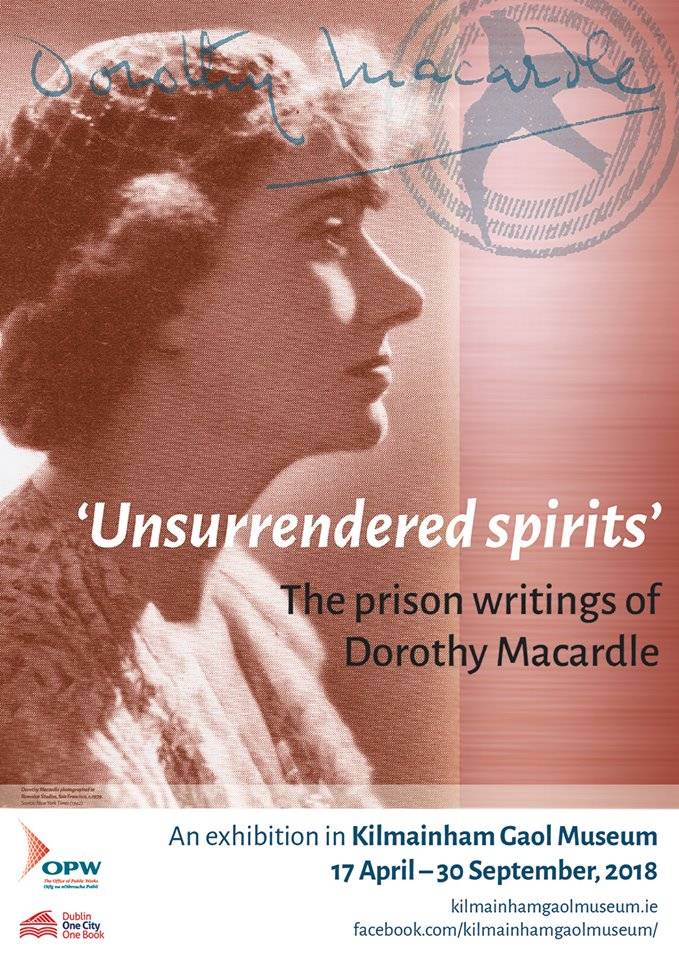
Dublin-based artist Sinéad McCann worked in collaboration with UCD historians working on the Wellcome Trust Senior Investigator Award, Prisoners, Medical Care and Entitlement to Health in England and Ireland, 1850-2000, participants and staff at The Bridge Project in Dublin 8, and a Theatre of the Oppressed specialist to create the art installation which focuses on the theme of healthcare in Irish prisons.
Multiple screens and speakers will be installed in the Old Courtroom. On the screens three characters play out various perspectives on healthcare in Irish prison in the 19th and 20th centuries.
- Tommy (played by actor Tommy O’Neill) performs a series of monologues produced by men about their own lived experience of healthcare in Irish prison, and created from material from historical documents related to healthcare in Irish prisons from the 19th
- Charlie, (played by actor Charlie Kinsella) a child actor performs a series of monologues based on some of the men’s experiences in Saint Patrick’s Institution as children, as well as historical documents relating to an enquiry into Saint Patrick’s Institution in the 1960s.
- Neili, (played by actor Neili Conroy) performs a series of written responses made (to the monologues created by the men) by professionals working in the Criminal Justice field in Ireland including from the Irish Prison Service; a chaplain, an addiction counsellor, 2 ex-govenors, and a representative from the Irish Penal Reform Trust.
The three characters appear on the multiple screens and will speak to and interrupt each other throughout the duration of one loop of the art installation. Text from historical documents dated 1840s, 1960s and 1970s will appear on screens in an interspersed way. The running time of the arts installation will be no longer than 25 minutes and will play on a loop throughout the day. The artwork will offer multiple perspectives on the long history of healthcare in prison inviting the visitors to the exhibition to reflect on the narratives presented and form their own opinions on this topic.
The project is funded by the Arts Council of Ireland, Dublin City Council with in kind support from UCD.
